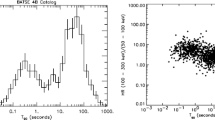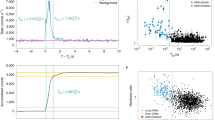Abstract
Gamma-ray bursts (GRBs) are the most energetic and yet the most mysterious events in the Universe, which are observed in all ranges of electromagnetic spectrum from radio-bandwidth up to very high energy of about TeV energies. Moreover, recently GRBs accompanying gravitational waves produced in binary neutron star merging were discovered. Despite on the GRB is initially registering by space-born gamma-ray omnidirectional detectors or wide field of view telescopes, the most information for GRB investigation obtained by ground based optical observations. Optical observations allow investigating not only the properties of the bursts themselves, but also their ISM surroundings, host galaxies, and phenomena related to GRBs such as core collapsed supernova and kilonova. Bright GRB can give unique information suitable for modeling, but optically bright burst is registered once per 5 years and can be counted on the fingers of one hand. Statistical analysis is still a main instrument of GRB investigation. We give a review of available optical databases of GRBs and present the original database constructed using optical observations of the Space Research Institute GRB Follow-up Network. We provide examples of some statistical properties of the phenomenon, that can be studied using these databases and discuss constructing necessary databases for future investigations.
Access this chapter
Tax calculation will be finalised at checkout
Purchases are for personal use only
Similar content being viewed by others
References
Greiner, J., Mazzali, P.A., Kann, D.A., et al.: A very luminous magnetar-powered supernova associated with an ultra-long γ-ray burst. Nature 523(7559), 189–192 (2015)
Kann, D.A., Klose, S., Zhang, B., et al.: The Afterglows of swift-era gamma-ray bursts. II. Type I GRB versus type II GRB optical afterglows. Astrophys. J. 734(2), 47 p. (2011). id. 96
Kumar, P., Zhang, B.: The physics of gamma-ray bursts & relativistic jets. Phys. Rep. 561, 1–109 (2015)
Racusin, J.L., Liang, E.W., Burrows, D.N., et al.: Jet breaks and energetics of swift gamma-ray burst X-Ray afterglows. Astrophys. J. 698(1), 43–74 (2009)
Zhang, B.-B., van Eerten, H., Burrows, D.N., et al.: An analysis of chandra deep follow-up gamma-ray bursts: implications for off-axis jets. Astrophys. J. 806(1), 11 p. (2015). id. 15
Rees, M.J., Meszaros, P.: Unsteady outflow models for cosmological gamma-ray bursts. Astrophys. J. Lett. 430, L93–L96 (1994)
Kobayashi, S., Piran, T., Sari, R.: Can internal shocks produce the variability in gamma-ray bursts? Astrophys. J. 490, 92–98 (1997)
Hu, Y.-D., Liang, E.-W., Xi, S.-Q., et al.: Internal energy dissipation of gamma-ray bursts observed with swift: precursors, prompt gamma-rays, extended emission, and late X-Ray Flares. Astrophys. J. 789(2), 13 p. (2014). id. 145
Mészáros, P., Rees, M.J.: Optical and long-wavelength afterglow from gamma-ray bursts. Astrophys. J. 476(1), 232–237 (1997)
Sari, R., Piran, T.: Cosmological gamma-ray bursts: internal versus external shocks. Mon. Not. Roy. Astron. Soc. 287(1), 110–116 (1997)
J. Greiner’s GRB webpage. http://www.mpe.mpg.de/~jcg/grbgen.html. Accessed 30 Mar 2021
Lipkin, Y.M., Ofek, E.O., Gal-Yam, A., et al.: The detailed optical light curve of GRB 030329. Astrophys. J. 606(1), 381–394 (2004)
Perley, D.A., Cenko, S.B., Corsi, A., et al.: The afterglow of GRB 130427A from 1 to 1016 GHz. Astrophys. J. 781(1), 21 p. (2014). id. 37
Hjorth, J., Bloom, J.S.: The gamma-ray burst - supernova connection. In: Kouveliotou, C., Wijers, R.A.M.J., Woosley, S. (eds.) Chapter 9 in “Gamma-Ray Bursts”, Cambridge Astrophysics Series, vol. 51, pp. 169–190. Cambridge University Press, Cambridge (2012)
Volnova, A.A., Pruzhinskaya, M.V., Pozanenko, A.S., et al.: Multicolour modelling of SN 2013dx associated with GRB 130702A. Mon. Not. Roy. Astron. Soc. 467(3), 3500–3512 (2017)
Li, L.-X., Paczynski, B.: Transient events from neutron star mergers. Astrophys. J. Lett. 507(1), L59–L62 (1998)
Metzger, B.D., Martínez-Pinedo, G., Darbha, S., et al.: Electromagnetic counterparts of compact object mergers powered by the radioactive decay of r-process nuclei. Mon. Not. R. Astron. Soc. 406(4), 2650–2662 (2010)
Tanvir, N.R., Levan, A.J., Fruchter, A.S., et al.: A ‘kilonova’ associated with the short-duration γ-ray burst GRB 130603B. Nature 500(7464), 547–549 (2013)
Abbott, B.P., Abbott, R., Abbott T.D., et al.: Multi-messenger observations of a binary neutron star merger. Astrophys. J. Lett. 848(2), 59 p. (2017). id. L12
Pozanenko, A.S., Barkov, M.V., Minaev, P.Yu., et al.: GRB 170817A associated with GW170817: multi-frequency observations and modeling of prompt gamma-ray emission. Astrophys. J. Lett. 852(2), 18 p. (2018). id. L30
Palla, M., Matteucci, F., Calura, F., Longo, F.: Galactic archaeology at high redshift: inferring the nature of GRB host galaxies from abundances. Astrophys. J. 889(1), 17 p. (2020). id. 4
Volnova, A.A., Pozanenko, A.S. Gorosabel, J., et al.: GRB 051008: a long, spectrally hard dust-obscured GRB in a Lyman-break galaxy at z ≈ 2.8. Mon. Not. Roy. Astron. Soc. 442(3), 2586–2599 (2014)
Costa, E., Frontera, F., Heise, J., et al.: Discovery of an X-ray afterglow associated with the γ-ray burst of 28 February 1997. Nature 387(6635), 783–785 (1997)
Yi, S.X, Yu, H., Wang, F. Y., Dai, Z.-G.: Statistical distributions of optical flares from gamma-ray bursts. Astrophys. J. 844(1), 8 p. (2017). id. 79
Mazaeva, E.; Pozanenko, A.; Minaev, P.: Inhomogeneities in the light curves of gamma-ray bursts afterglow. Int. J. Mod. Phys. D 27(10) (2018). id. 1844012
Amati, L., Guidorzi, C., Frontera, F., et al.: Measuring the cosmological parameters with the Ep,i-Eiso correlation of gamma-ray bursts. Mon. Not. Roy. Astron. Soc. 391(2), 577–584 (2008)
Ghirlanda, G., Nava, L., Ghisellini, G., et al.: Gamma-ray bursts in the co-moving frame. Mon. Not. Roy. Astron. Soc. 420(1), 483–494 (2012)
Fong, W., Berger, E., Metzger, B. D., et al.: Short GRB 130603B: discovery of a jet break in the optical and radio afterglows, and a mysterious late-time X-Ray excess. Astrophys. J. 780(2), 9 p. (2014). id. 118
Wang, X.-G., Zhang, B., Liang, E.-W., et al.: Gamma-ray burst jet breaks revisited. Astrophys. J. 859(2), 22 p. (2018). id. 160
Cano, Z.: The observer’s guide to the gamma-ray burst-supernova connection. In: Eighth Huntsville Gamma-Ray Burst Symposium, held 24–28 October 2016 in Huntsville, Alabama. LPI Contribution No. 1962, id. 4116 (2016)
Modjaz, M., Liu, Y. Q., Bianco, F.B., Graur, O.: The spectral SN-GRB connection: systematic spectral comparisons between type Ic supernovae and broad-lined type Ic supernovae with and without gamma-ray bursts. Astrophys. J. 832(2), 23 p. (2016). id. 108
Lü, H.-J., Lan, L., Zhang, B., et al.: Gamma-ray burst/supernova associations: energy partition and the case of a magnetar central engine. Astrophys. J. 862(2), 13 p. (2018). id. 130
Pandey, S.B., Hu, Y., Castro-Tirado, A.J., et al.: A multiwavelength analysis of a collection of short-duration GRBs observed between 2012 and 2015. Mon. Not. Roy. Astron. Soc. 485(4), 5294–5318 (2019)
Minaev, P.Y., Pozanenko, A.S.: The Ep,I-Eiso correlation: type I gamma-ray bursts and the new classification method. Mon. Not. Roy. Astron. Soc. 492(2), 1919–1936 (2020)
Wang, F., Zou, Y.-C., Liu, F., et al.: A comprehensive statistical study of gamma-ray bursts. Astrophys. J. 893(1), 90 p. (2020). id. 77
GCN Circulars. https://gcn.gsfc.nasa.gov/gcn3_archive.html. Accessed 30 Mar 2021
SWIFTGRB - Swift Gamma Ray Bursts Catalog. https://heasarc.gsfc.nasa.gov/W3Browse/swift/swiftgrb.html. Accessed 30 Mar 2021
Band, D., Matteson, J., Ford, L., et al.: BATSE observations of gamma-ray burst spectra. I. Spectral diversity. Astrophys. J. 413, 281 (1993)
Donato, D., Angelini, L., Padgett, C.A., et al.: The HEASARC swift gamma-ray burst archive: the pipeline and the catalog. Astrophys. J. Suppl. 203(1), 17 p. (2012). id. 2
Kann, D.A., Klose, S., Zhang, B., et al.: The afterglows of swift-era gamma-ray bursts. I. Comparing pre-swift and swift-era long/soft (Type II) GRB optical afterglows. Astrophys. J. 720(2), 1513–1558 (2010)
Lipunov, V., Kornilov, V., Gorbovskoy, E., et al.: Master robotic net. Adv. Astron. (2010). id. 349171
Ershova, O.A., et al.: Early optical observations of gamma-ray bursts compared with their gamma- and X-Ray characteristics using a MASTER global network of robotic telescopes from Lomonosov moscow state university. Astron. Rep. 64(2), 126–158 (2020). https://doi.org/10.1134/S1063772920020018
Akerlof, C.W., Ashley, M.C.B., Casperson, D.E., et al.: The ROTSE-III robotic telescope system. Publ. Astron. Soc. Pac. 115(803), 132–140 (2003)
Rykoff, E.S., Aharonian, F., Akerlof, C.W., et al.: Looking into the fireball: ROTSE-III and swift observations of early gamma-ray burst afterglows. Astrophys. J. 702(1), 489–505 (2009)
Cui, X.H., Wu X.F., Wei J.J., et al.: The optical luminosity function of gamma-ray bursts deduced from ROTSE-III observations. Astrophys. J. 795(2), 6 p. (2014). id. 103
Li, L., Wang, Y., Shao, L., et al.: A large catalog of multiwavelength GRB afterglows. I. color evolution and its physical implication. Astrophys. J. Suppl. Ser. 234(2), 29 p. (2018). id. 26
Blanchard, P.K., Berger, E., Fong, W.: The offset and host light distributions of long gamma-ray bursts: a new view from HST observations of swift bursts. Astrophys. J. 817(2), 30 p. (2016). id. 144
GHostS – GRB Host Studies. http://www.grbhosts.org/Default.aspx
Pozanenko, A., Mazaeva, E., Volnova, A., et al.: GRB afterglow observations by international scientific optical network (ISON). In: Eighth Huntsville Gamma-Ray Burst Symposium, held 24–28 October, 2016 in Huntsville, Alabama. LPI Contribution No. 1962, id.4074 (2016)
Mazaeva, E., et al.: Searching for optical counterparts of LIGO/Virgo events in O2 run. In: Elizarov, A., Novikov, B., Stupnikov, S. (eds.) DAMDID/RCDL 2019. CCIS, vol. 1223, pp. 124–143. Springer, Cham (2020). https://doi.org/10.1007/978-3-030-51913-1_9
Skvortsov, N.A., et al.: Conceptual approach to astronomical problems. Astrophys. Bull. 71(1), 114–124 (2016). https://doi.org/10.1134/S1990341316010120
Kalinichenko, L.A., Volnova, A.A., Gordov, E.P., et al.: Data access challenges for data intensive research in Russia. Inform. Appl. 10(1), 2–22 (2016)
Kalinichenko, L., Fazliev, A., Gordov, E.P., et al.: New data access challenges for data intensive research in Russia. In: CEUR Workshop Proceedings “Selected Papers of the 17th International Conference on Data Analytics and Management in Data Intensive Domains, DAMDID/RCDL 2015”, vol. 1536, pp. 215–237 (2015)
LSST Science Collaborations and LSST Project 2009, LSST Science Book, Version 2.0, arXiv:0912.0201
Kool, E., Stein, R, Sharma, Y., et al.: LIGO/Virgo S190901ap: Candidates from the Zwicky Transient Facility. GCN Circ. 25616 (2019)
Abbott, B.P., Abbott, R., Abbott, T.D. et al.: Gravitational waves and gamma-rays from a binary neutron star merger: GW170817 and GRB 170817A. Astrophys. J. Lett. 848(2), 27 p. (2017). id. L13
Pozanenko, A.S., Minaev, P.Y., Grebenev, S.A., Chelovekov, I.V.: Observation of the second LIGO/Virgo event connected with a binary neutron star merger S190425z in the gamma-ray range. Astron. Lett. 45(11), 710–727 (2019). https://doi.org/10.1134/S1063773719110057
Abbott, B.P., Abbott, R., Abbott, T.D., et al.: GW190425: observation of a compact binary coalescence with total mass ∼3.4 M\( \odot \). Astrophys. J. Lett. 892(1), 24 p. (2020). id. L3
SIMBAD - SIMBAD Astronomical Database - CDS (Strasbourg). http://simbad.u-strasbg.fr/simbad/. Accessed 30 Mar 2021
NED - NASA/IPAC Extragalactic Database. https://ned.ipac.caltech.edu. Accessed 30 Mar 2021
Virtual Observatory http://ivoa.net. Accessed 30 Mar 2021
Author information
Authors and Affiliations
Editor information
Editors and Affiliations
Rights and permissions
Copyright information
© 2021 Springer Nature Switzerland AG
About this paper
Cite this paper
Volnova, A., Pozanenko, A., Mazaeva, E., Belkin, S., Minaev, P. (2021). Databases of Gamma-Ray Bursts’ Optical Observations. In: Sychev, A., Makhortov, S., Thalheim, B. (eds) Data Analytics and Management in Data Intensive Domains. DAMDID/RCDL 2020. Communications in Computer and Information Science, vol 1427. Springer, Cham. https://doi.org/10.1007/978-3-030-81200-3_11
Download citation
DOI: https://doi.org/10.1007/978-3-030-81200-3_11
Published:
Publisher Name: Springer, Cham
Print ISBN: 978-3-030-81199-0
Online ISBN: 978-3-030-81200-3
eBook Packages: Computer ScienceComputer Science (R0)




